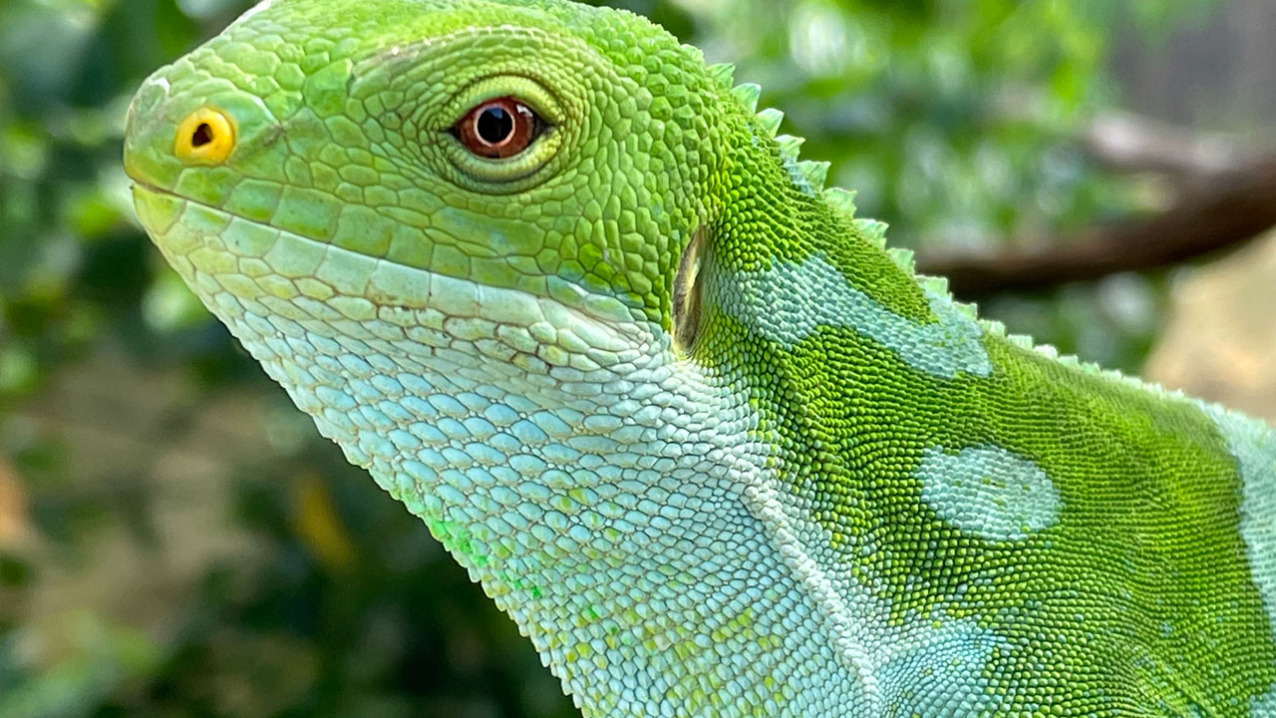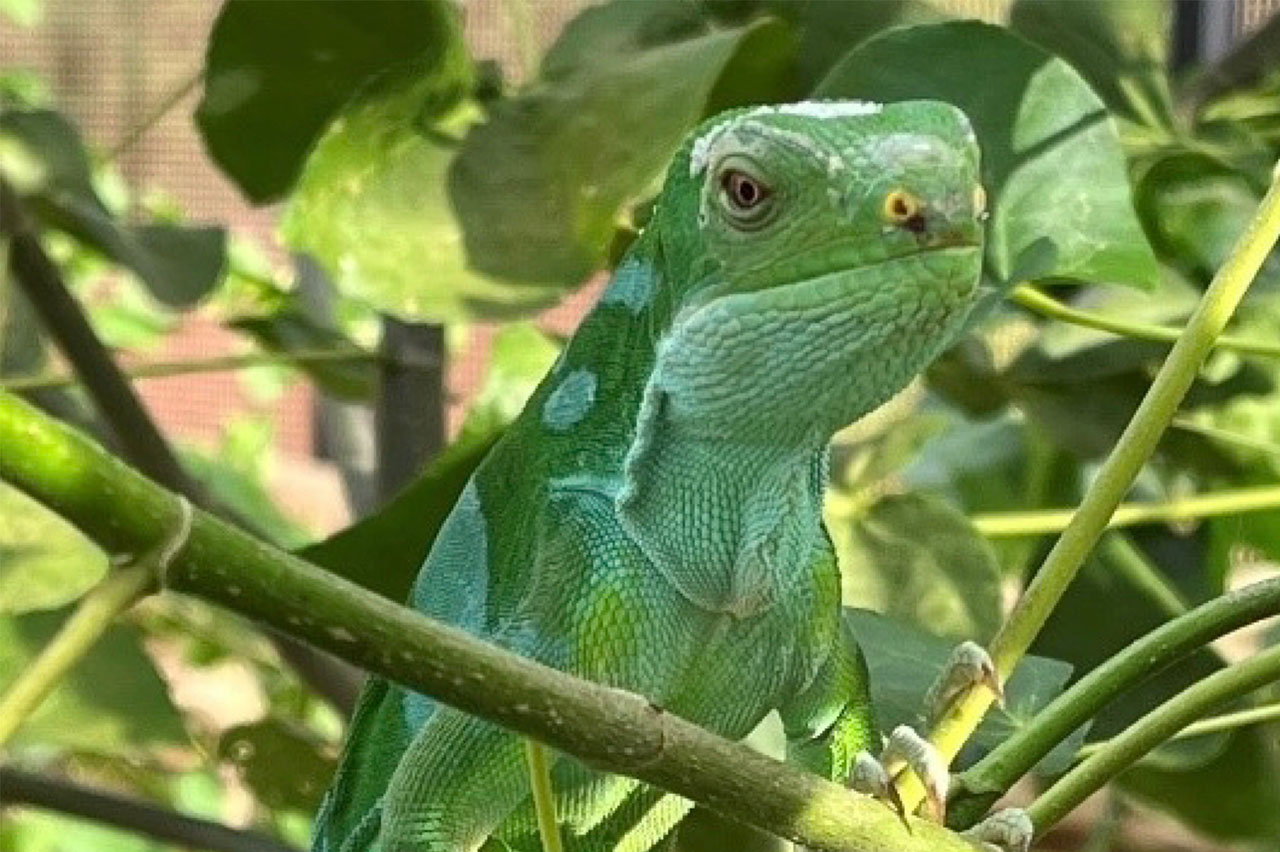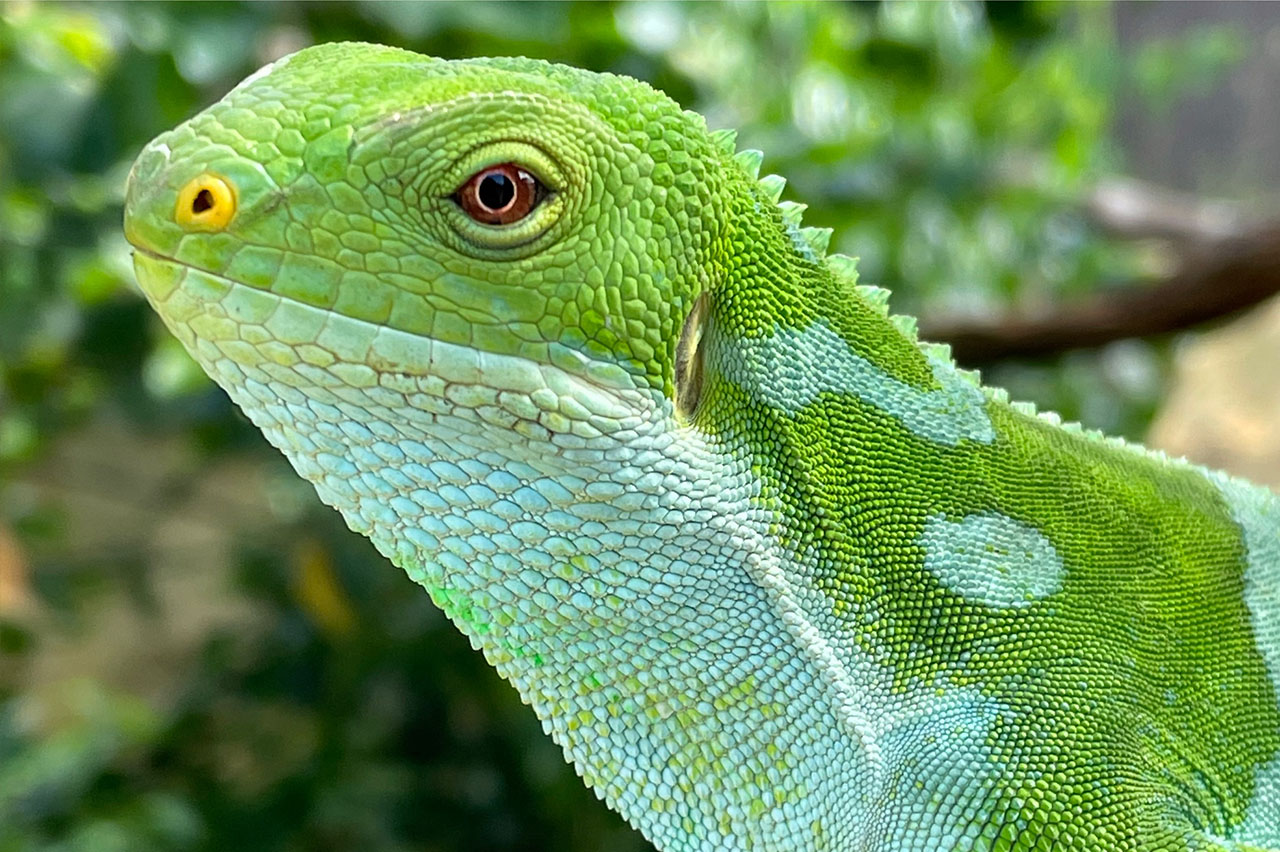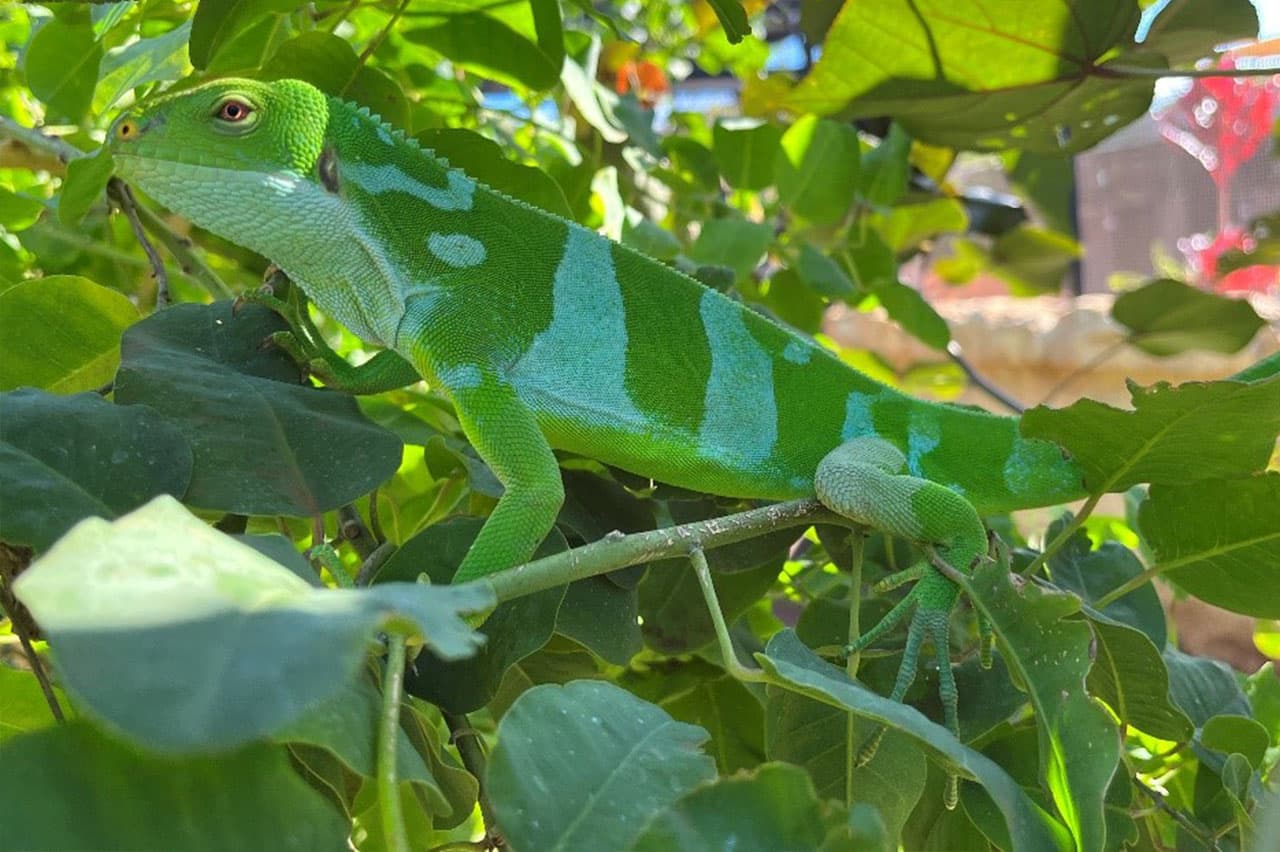Brachylophus fasciatus
Fiji Banded Iguana
About Me
Fiji Banded Iguana also known as the Lau Banded Iguana come in a brilliant green color with spots and stripes of either blue or light green. Their coloration helps them camouflage with their environment. Adults can grow up to 21 inches with most of their length coming from their tail.
Fiji Banded Iguana also known as the Lau Banded Iguana come in a brilliant green color with spots and stripes of either blue or light green. Their coloration helps them camouflage with their environment. Adults can grow up to 21 inches with most of their length coming from their tail.
Like most Iguana species they are primarily herbivorous feeding on flowers, fruits, and leaves.
The Fiji Banded Iguana is one of the few species of Iguana that are found throughout some of the islands of Fiji. These Iguanas are arboreal meaning they primarily live in trees.
Fiji Banded Iguanas are diurnal meaning they are active in the day. They primarily spend their time climbing in search of food. Reptiles are ectotherms meaning they rely on the environment to regulate their temperature. Here at our zoo, our Iguana can be found climbing and basking in the top half of the exhibit, so look up.
Female Iguanas will descend from the canopy to nest. They will dig a hole in which they lay their eggs and then cover the hole with dirt and leaf litter. Once that is done they will retreat to the treetops and the young when hatched can take care of themselves.
The Fiji Banded Iguana is an endangered species. They are threatened primarily by human encroachment and invasive species. As an island species when land is taken from them, they have nowhere to escape or go to limit the resources and space they have. The introduction of invasive species to islands can lead to the devastation of indigenous species.
Other Reptiles
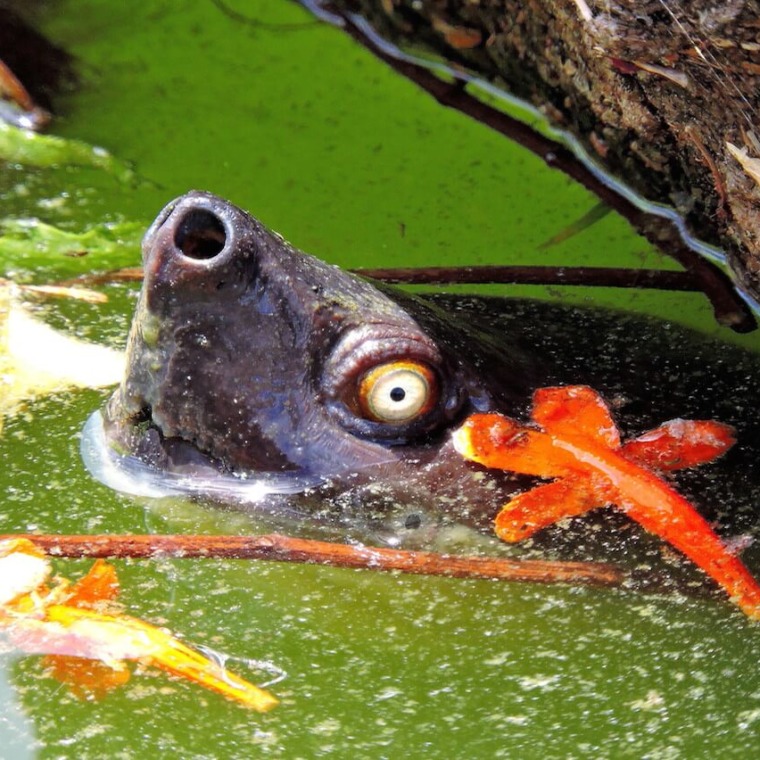
The last populations of Tutong are found in India, Indonesia, Bangaladesh, and Malaysia. It is extinct in its former range of Thailand, Myanmar, Vietnam, and Singapore.
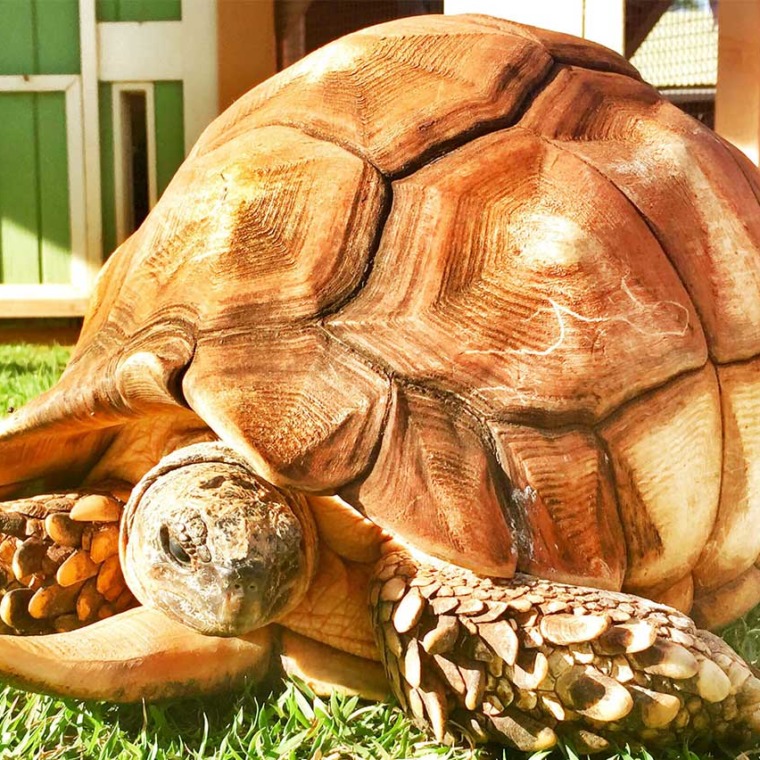
Inactive during cool, dry season (May to October). Does not dig burrows. Seeks protection in thickets and seeks shelter in surface litter. Forages during morning and late afternoon.
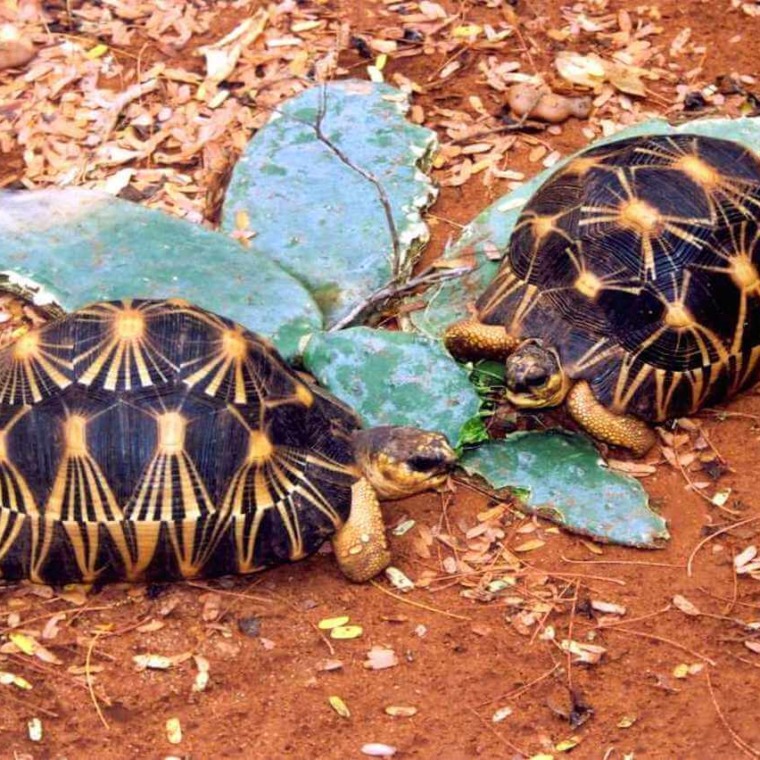
In the wild, this reptile is relegated to the extreme south and south-western portions of Madagascar. In recent times, they have also been introduced to the nearby island of Reunion.
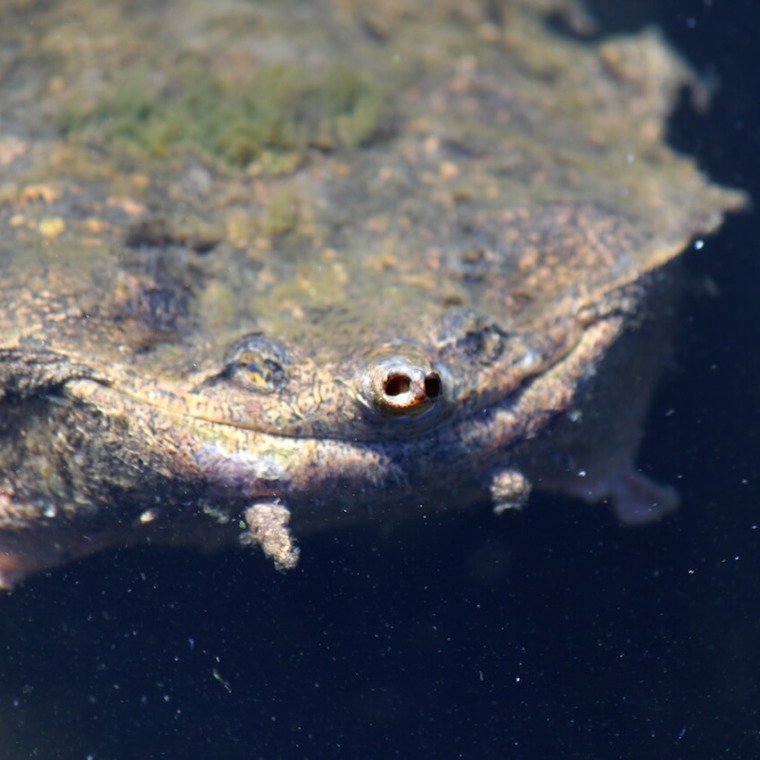
This species inhabits stagnant pools in Brazil and the Guianas and also in parts of the Amazon River and in Trinidad.
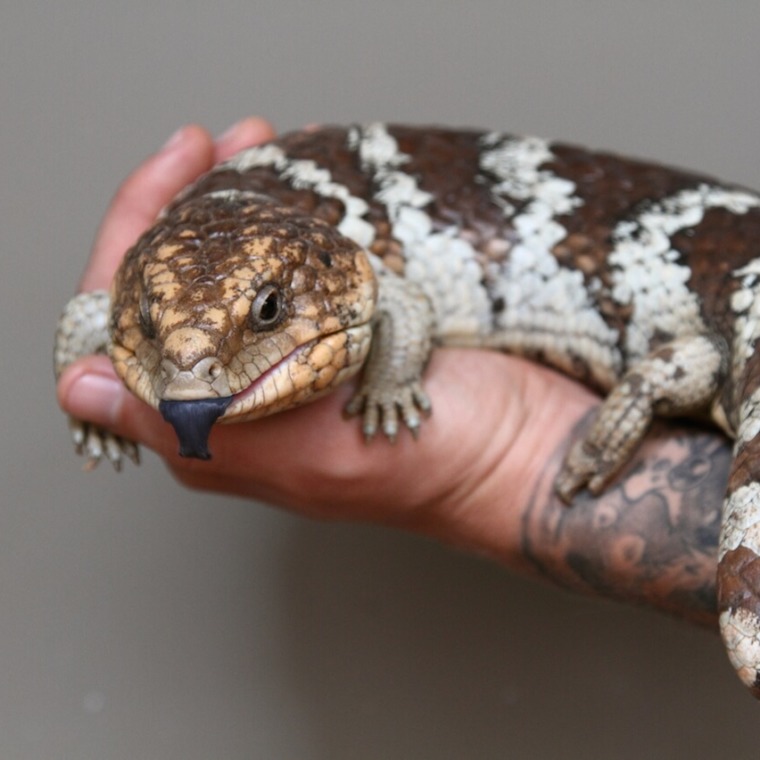
The Shingleback skink is found in southern and western Australia, in desert grassland areas or sandy dunes. Skinks are shy and secretive and seldom stray far from their shelter.


